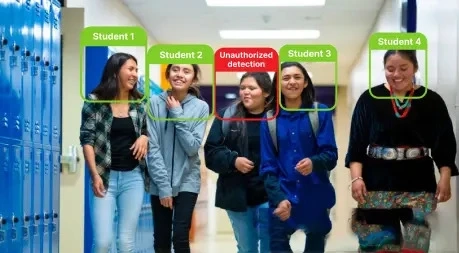In recent years, ensuring the safety and security of students and staff within educational institutions has become a paramount concern. With the rise in incidents of violence and emergencies in schools, there's a growing need for advanced technological solutions to bolster security measures. Among these, AI video analytics emerges as a powerful tool offering proactive surveillance, threat detection, and rapid response capabilities. This article explores how AI video analytics can revolutionize school security, offering a comprehensive approach to safeguarding educational environments.
Introduction to AI Video Analytics in School Security
AI video analytics software involves the use of artificial intelligence algorithms to analyze video footage in real-time or retrospectively, enabling automated detection, recognition, and classification of various objects, behaviors, and anomalies. Applied to school security, AI video analytics systems can be integrated with existing surveillance cameras to provide continuous monitoring and analysis of activities within the school premises.
Key Components of AI Video Analytics for School Security
Behavioral Analysis:
AI algorithms can be trained to recognize suspicious behaviors such as loitering in restricted areas, aggressive movements, or unauthorized access attempts. By analyzing patterns of behavior, the system can alert security personnel to potential threats before they escalate.
Object Detection and Recognition:
AI-powered video analytics can identify objects of interest such as weapons, backpacks, or intruders in real-time. This capability enables quick response to security breaches and allows authorities to take proactive measures to neutralize threats.
Facial Recognition:
Integrating facial recognition technology with AI video analytics enables the identification of individuals on school premises. This can be used to track the movement of known offenders, prevent unauthorized entry, and enhance overall security by identifying potential threats in real-time.
Anomaly Detection:
AI algorithms can detect anomalies in the school environment, such as abandoned bags, unusual gatherings, or erratic movements. By flagging such anomalies, security personnel can investigate and mitigate potential risks promptly.
Benefits of AI Video Analytics for School Security
Proactive Threat Detection:
AI video analytics enables early detection of potential security threats, allowing authorities to respond swiftly and prevent incidents before they occur.
Real-time Monitoring:
By continuously analyzing video feeds, AI systems provide real-time monitoring of school premises, enhancing situational awareness and enabling rapid response to emergencies.
Efficient Resource Allocation:
AI-powered security systems reduce the need for manual monitoring and intervention, allowing security personnel to focus their efforts on critical tasks and emergencies.
Scalability and Flexibility:
AI video analytics solutions are scalable and adaptable to the specific security needs of each school. Whether it's a small primary school or a large university campus, AI systems can be customized to provide optimal security coverage.
Data-driven Insights:
By analyzing large volumes of video data, AI algorithms generate valuable insights into security trends, vulnerabilities, and potential areas for improvement, empowering school administrators to make informed decisions about security protocols and resource allocation.
Challenges and Considerations
While AI video analytics holds immense potential for enhancing school security, several challenges and considerations must be addressed:
Privacy Concerns:
The use of facial recognition and biometric data raises privacy concerns among students, parents, and civil liberties advocates. It's crucial to implement robust privacy policies and safeguards to protect individuals' rights and ensure compliance with relevant regulations.
Accuracy and Reliability:
AI algorithms are susceptible to errors and false positives, especially in complex and dynamic environments such as schools. Continuous testing, validation, and refinement of algorithms are essential to improve accuracy and reliability.
Ethical Implications:
The use of AI for surveillance raises ethical questions regarding consent, transparency, and potential biases. It's imperative to engage stakeholders in open dialogue and ethical considerations to ensure responsible deployment and use of AI video analytics in school security.
Integration with Existing Systems:
Seamless integration of AI video analytics with existing security infrastructure, such as access control systems and emergency response protocols, is critical for maximizing effectiveness and minimizing disruption.
Conclusion
AI video analytics offers a transformative approach to enhancing school security by providing proactive surveillance, threat detection, and rapid response capabilities. By leveraging advanced algorithms for behavioral analysis, object recognition, facial recognition, and anomaly detection, AI systems enable schools to create safer environments for students, staff, and visitors. However, to realize the full potential of AI video analytics in school security, it's essential to address challenges related to privacy, accuracy, ethics, and integration. Through collaborative efforts between technology providers, educators, policymakers, and communities, AI video analytics can play a pivotal role in safeguarding educational institutions and promoting a culture of safety and security.


